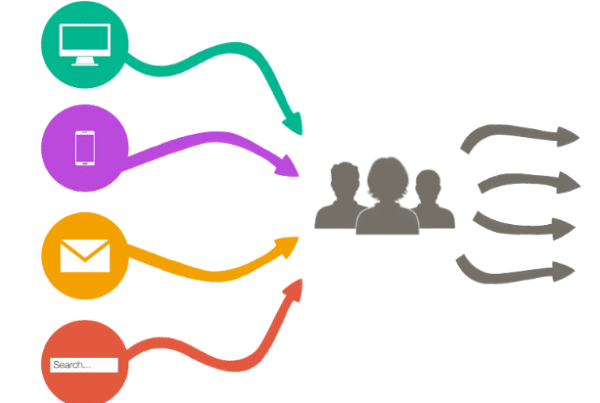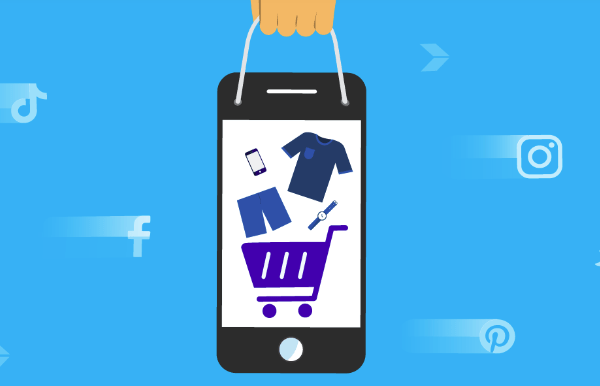In 2024, the digital landscape is more competitive than ever, with brands vying for customer attention in an oversaturated market. To stand out, personalization has become a key differentiator, and artificial intelligence (AI) is the driving force behind this transformation. AI-powered personalization is reshaping the e-commerce industry by offering customers hyper-personalized experiences, increasing engagement, and ultimately driving sales. Let’s explore how e-commerce brands are leveraging AI to win over customers and what you can do to stay ahead in this evolving landscape.
Why Personalization Matters
In today’s digital age, customers expect more than just a transactional shopping experience—they want to feel understood. Research shows that 80% of consumers are more likely to make a purchase when brands offer personalized experiences. Gone are the days of one-size-fits-all marketing. Consumers want content, products, and recommendations that resonate with their individual preferences, behaviors, and needs.
AI technology has made it easier than ever to deliver that kind of personalization at scale. Whether it’s product recommendations, personalized email campaigns, or dynamic website content, AI helps brands tailor every interaction to the customer’s unique profile. This personalized approach not only increases conversion rates but also fosters long-term customer loyalty.
The Role of AI in E-Commerce Personalization
AI-driven personalization takes into account vast amounts of data, including browsing history, purchase behavior, demographic information, and even real-time user interactions. Here are a few key ways AI is revolutionizing e-commerce personalization in 2024:
1. Predictive Analytics for Tailored Recommendations
AI excels at analyzing customer data and predicting future behaviors. By understanding a customer’s past interactions with a brand, AI-powered algorithms can predict what products they are most likely to purchase in the future. This predictive power allows brands to offer personalized product recommendations, increasing the likelihood of conversion.
For example, e-commerce giants like Amazon and Netflix have long used AI algorithms to suggest products or content based on a user’s history. Smaller e-commerce brands can now leverage similar technology, offering personalized recommendations in real-time, whether through product pages, emails, or even social media ads.
2. Dynamic Pricing Models
AI is also transforming the way brands set prices. With dynamic pricing models, AI algorithms analyze demand, competitor pricing, and customer behavior to adjust prices in real-time. This ensures that customers are always seeing the most relevant prices, which can lead to higher conversions and increased profit margins. Amazon has been doing this for quite a while with repricing features a few years back.
Brands like Uber and airline companies have been using dynamic pricing for years, but in 2024, we are seeing more e-commerce brands adopt this strategy. AI-driven pricing ensures that businesses remain competitive while maximizing revenue.
3. Natural Language Processing (NLP) for Better Customer Interactions
Natural language processing (NLP), a subset of AI, is improving the way brands communicate with customers. AI-powered chatbots and virtual assistants are now able to have more human-like conversations, offering personalized product suggestions, answering questions, and even handling customer service issues. These bots are available 24/7, allowing brands to offer personalized service at any time of the day, ensuring a seamless customer experience.
Additionally, AI can analyze customer feedback from reviews, emails, and social media, extracting insights to further personalize marketing efforts. This gives brands the ability to understand customer sentiment and adjust strategies in real-time.
4. Personalized Content Across Multiple Channels
AI enables brands to deliver personalized content across various touchpoints, from email marketing to social media and in-app experiences. For example, AI can segment email subscribers based on their shopping habits, interests, and engagement levels, allowing for hyper-targeted email campaigns that are far more effective than generic blasts.
Social media platforms are also integrating AI-driven personalization, with algorithms showing users more relevant ads based on their past interactions. In 2024, platforms like Instagram and TikTok allow e-commerce brands to target specific users with personalized content, resulting in higher engagement and sales.
5. Enhanced Customer Loyalty Programs
AI isn’t just about acquiring new customers—it’s also about retaining existing ones. In 2024, brands are using AI to create smarter loyalty programs that offer personalized rewards based on customer behavior. Instead of generic discounts, brands can offer tailored incentives, such as exclusive products or personalized offers, based on a customer’s shopping history and preferences. This type of personalization not only increases customer satisfaction but also fosters long-term brand loyalty.
Real-Time Personalization: The Future of E-Commerce
Real-time personalization is quickly becoming a necessity for e-commerce brands looking to stay competitive. AI-powered algorithms can now adjust product recommendations, pricing, and content as a customer interacts with a website. This means that two customers browsing the same website at the same time may have completely different experiences, each tailored to their unique needs.
For example, if a customer is browsing a fashion website, AI can track their behavior in real-time and suggest complementary products based on what they’ve clicked on or added to their cart. This level of personalization helps reduce cart abandonment and increases average order value.
How to Implement AI-Driven Personalization in Your E-Commerce Strategy
To harness the power of AI-driven personalization, brands need to focus on three key areas:
- Data Collection: Start by gathering as much data as possible about your customers. This includes purchase history, browsing behavior, demographic information, and even data from third-party sources. The more data you have, the more accurate your AI algorithms will be.
- AI Tools and Platforms: There are a number of AI-driven tools and platforms available that can help you implement personalization across your website, email marketing, and other channels. Look for solutions that integrate seamlessly with your existing e-commerce platform and offer real-time personalization capabilities.
- Testing and Optimization: AI algorithms become smarter over time, but it’s important to continuously test and optimize your personalization efforts. Monitor your data closely and make adjustments to your algorithms as needed to ensure that you’re delivering the best possible experience for your customers.
Conclusion
In 2024, AI-driven personalization is no longer a luxury—it’s a necessity for e-commerce brands looking to stay competitive. By leveraging AI to deliver tailored experiences, brands can increase customer satisfaction, drive higher conversions, and foster long-term loyalty. As the technology continues to evolve, the possibilities for personalization in e-commerce are limitless, making it an exciting time for brands and consumers alike.
Embrace the power of AI-driven personalization now, and position your brand for success in the rapidly evolving world of e-commerce.


